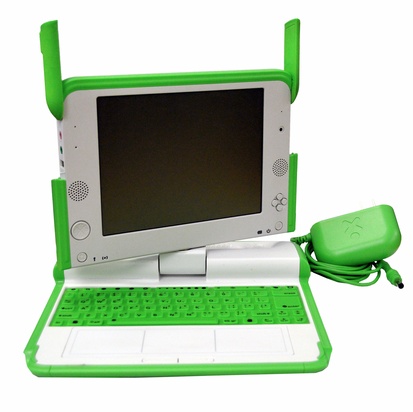OLPC XO-1
- Operating System :
- Fedora-based (Linux) with Sugar GUI
- Weight :
- 3.5 lbs, about the size of a textbook
- Processor :
- 433 MHz X86 AMD Geode LX-700 at 0.8W
- Memory :
- 1024 MB of SLC NAND flah memory
- Price :
- started at $188.00 and decreased to $100.00
- Year :
- 2007
To allow usability far from a power grid, the XO-1 runs on minimal power, consuming only about 2W of power during normal use, and can last on its rechargeable LiFePO4 battery for an average of 3 hours. Other power options include: a small charger, solar power, a hand-crank generator, and even a bike generator. Another power saving feature is its low-cost 7.5 LCD screen that has a transforming ability to change from a back-lit full color mode to a low-power e-book mode that is monochrome and reflective in sunlight.
Although features like a disc drive, a cooling fan, and a hard drive were omitted, there are plenty other features that make this computer efficient. It has a hinge that allows the user to rotate the screen in its standard laptop setup, and can change to e-book and gaming formats. It runs on a flash memory and has a unique WiFi mesh networking system that allows the computers to operate on a peer-to-peer network. As long as one computer in the cloud is connected to the internet then the whole network can share access. Other features include: a stylus/touch pad, built-in camera, speakers, and microphone. @ http://one.laptop.org/

